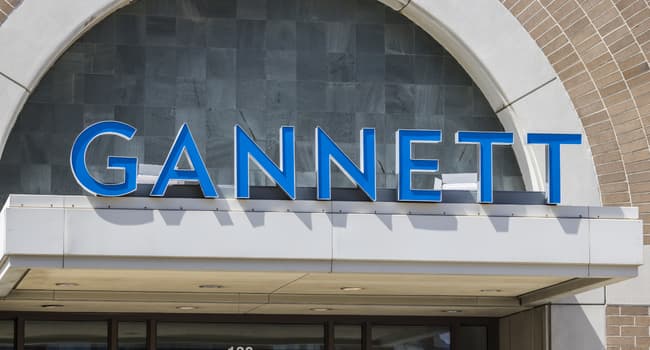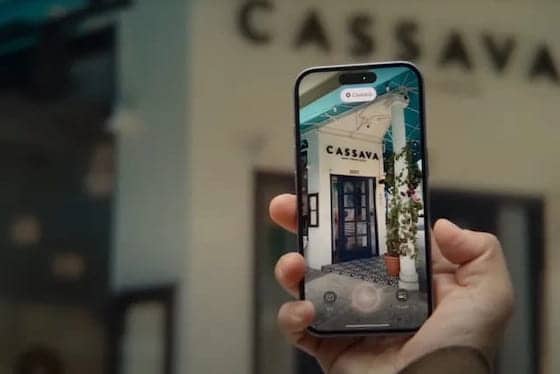Every now and again we like to share an encore presentation of a particularly interesting or revealing interview from our ongoing Localogy Live interview series.
Today we’re taking a look back at a conversation from late last year featuring Gannett‘s Chief Revenue Officer Kevin Gentzel.
Kevin talks about how Gannett is winning in the new era of first-part and zero-party data as we move away from third-party cookies.
Kevin loves to point out that he is a Pensacola, Florida, native. His professional roots are in media advertising sales and sales leadership. A former Forbes, Washington Post, and Yahoo senior advertising executive, Kevin joined Gannett about seven years ago to oversee revenue operations. Kevin now has roughly 4,000 people across Gannett’s properties helping him drive about $1.6 billion in annual revenue. In aggregate, Gannett’s local media properties reach 150 million Americans every month.
So if we fast forward to today, Gannett is now a truly diversified combination of traditional and digital media assets. The company deploys a combination of acquired and homegrown technology to help brands and local companies build their businesses.
Much of the acquired tech came from a trio of acquisitions over the past six years. These include ReachLocal (2016), location management software company SweetIQ (2017), and the SaaS solution Wordstream (2018). These acquisitions formed the foundation of LOCALiQ, Gannett’s local and SMB play, which the company rolled out in 2018.
Kevin also talks about Gannett’s partnership strategy, including its recent deal with SNAP to take SNAPs SMB-focsed ad products to market.
Here are some edited and abridged highlights from our discussion with Kevin. We encourage you to watch the video for the full color and context.
What are some of the biggest changes that you have seen over the past decade or so that have led to significant strategic shifts for Gannett?
In this span of time, we saw the emergence of the superpower of the platforms. We saw the emergence of adtech. And we also saw publishers trying to find their footing, moving from a print legacy business into a digital future. What is the role of the publisher? And how can we help advertisers build their brands in a digital world? And reach customers in engaging ways.
Also over the past decade, publishers have been ceding our audience first-party data to platforms.
Now the Chrome browser is deprecating third-party cookies and this is creating a rallying cry for digital media companies. This is a rallying cry that will create that relationship, that importance of first-party data to reclaim that relationship with our readers that we had ceded to third-party interlopers.
Hasn’t the movement to reform data privacy create a return to contextual advertising? And isn’t this an area where media companies are well positioned?
Absolutely. So I think what you are finding now is that the leading digital media companies are working to figure out how we can best define and differentiate who our readers are vs. others in the landscape.
Our USA Today Network has 260 local brands (e.g. Austin American Statesman, Detroit Free Press) with a combined reach of 150 million people in the United States each month. Our reach is significant.
And the work we create is critical to society. From school board meetings to high school sports.
National brands are more and more committed to buying local audiences. This helps us define who we are as we move into a first-party, zero-party world.
Talk about the media mix that Gannett now offers its advertisers.
The heart and soul of our company is local. Local is our superpower.
When we go to market locally, our sales and service teams are branded as LOCALiQ. And we did this very intentionally. We have worked hard to change the perception of who we are. We are no longer just looking to sell newspaper ads. That is certainly part of our offering.
Through acquisitions and organic build, we’ve designed marketing services and solutions offering that we run on top of our LOCALiQ platform. We can offer the local business owner search, social ads, websites, SEO and content marketing, listings management, and chat. Everything they need to help them win on the Internet.
How much of what you offer to local businesses comes from partners?
We work with Google and Facebook. But we are really excited about our partnership with SNAP. They are seeing real growth with their ad products roadmap that addresses the needs of SMBs.
We are bringing their ad products to life for brands in education, health care, and other categories.
Also when we sell PPC on Google or social ads on Facebook, we are providing advertisers our unique optimization via the LOCALiQ platform that they would not otherwise get.
What are some of the biggest near-term opportunities for Gannett?
We have an incredible design team at designIQ. When we are designing digital display ads, we are using AI to measure signals. And over time, certain attributes might increase performance or the opposite. This could be a game changer for us. And we are pushing to drive more value with AI and machine learning.
You can view the full Localogy Leaders interview with Kevin here.





